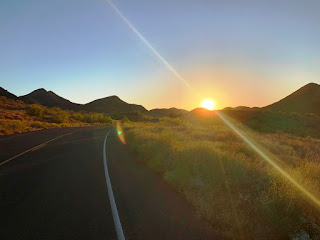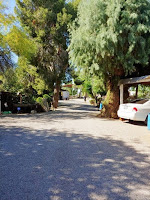We came, we saw, we froze, and then we left!!! It's time for another great birding adventure with gang out into the great cold & white open. In order for me to see new life birds, I have to travel to different places, different times of the year . . . so the chase was on to
Minnesota.
With schedules getting booked, the best time we could visit was late January 2019. We flew from Covington, KY to MSP direct on Delta, landing at 8am CST on a Friday. It was cold, but sunny. After getting the rental and breakfast, we had a 2 hour drive to Duluth.
We tried for some Duluth birds, like the reported T
ufted Duck, King Eider, Bohemian Waxwing & Northern Goshawk, but to no avail. The cold had frozen the lake, so no chance of ducks. Then we drove up & down Knife rd, but no luck with waxwings or goshawks. I only saw 9 species of birds the first day. It's cold here! So off to the hotel for check-in and sleep, tomorrow is going to be all
BOG!!
From Duluth, it's only a 30-40 min drive to the BOG, too bad it's negative 20 degrees this early in the morning. We used the map and driving tour guide to follow. It's a great resource for any birders first time at the BOG. Here is the link:
https://saxzim.org/plan-your-visit/
 |
| Dawn at BOG |
 |
| Its COLD |
Starting at the Warren Nelson bog, we missed the
Black Backed Woodpecker, she was there, seen by others, but I just never got to see her. So we left and visited some feeder stations. From there we headed up Rt 29 to the next feeder stations . . . . and finally . . . . much needed
 |
| Pine Grosbeak, #613 |
 |
| Female & Male PIGR |
LIFE BIRDS!!! Both several
Pine Grosbeaks and
Sharp-tailed Grouse where patiently feeding at the stations. Hey this map thing works.
 |
| Sharp-tailed Grouse, #612 |
A chicken-like bird of open prairies and parklands, the
Sharp-tailed
Grouse uses a wider variety of habitats than its close relatives the
prairie-chickens. Short, pointed tail, white at base.
The grayish bodies of
Pine Grosbeaks are decked out in pinkish reds on
males and yellows on females. They easily crush seeds and nip off tree
buds and needles with their thick and stubby bill.
Pine Grosbeaks inhabit open spruce, fir, and pine forests as well as
subalpine forests. In winter they tend to use mountain ash, maple, and
ash forests with abundant seeds.
OK, got the pressure off now, two life birds, with more to come!! Off to the visitor center now. It was not open yet, but the feeders had several more
PIGR, Common Redpoll, Pine Siskins to photo.
By now we had traveled up to ZIM rd., and where coming back south down McDavitt Rd., in hopes of hawk owl spot. We spotted 6 cars parked on the road. Again it was COLD. Only two cars had people in them, the other where empty. So we loaded up the gear, and started walking on this winter path east. We finally passed some birders, who said "yea--it's there just keep walking". OK, it's COLD but we keep walking this narrow snow path. Once we made the turn, there up in a tree . . .
 |
| Northern Hawk Owl, #614 |
 |
| Hey, looky here |
 |
| Lifer for ALL birders who brave |
A bird of boreal forests, the
Northern Hawk Owl behaves like a raptor,
but looks like an owl. Its oval body, yellow eyes, and round face
enclosed by dark parentheses are distinctly owl. Its long tail and habit
of perching atop solitary trees and hunting by daylight, though, are
reminiscent of a raptor. It is a solitary bird that tends to stick to
the boreal forest, but some winters it moves south into the northern
United States delighting birders near and far.
OK, WOW. What a journey, such fun to share the experience with friends and birders, but now its back to the car, because it's
COLD.
Now we head down to Sax Rd., then back north on Admiral Rd. to the world famous "Admiral Feeders". A spot that has been know of for years and most reliable for
Boreal Chickadee. We pull up, and there's about 10 cars, about 30 birders, all real close to the feeding station. I walk up and ask a guy about our two target birds . . . and he points and says "yeah, they are right there" . . . .
 |
| Canada Jay, #615 |
 |
| Boreal Chickadee. #616 |
 |
| Admiral rd. feeders |
The deceptively cute
Canada Jay is one of the most intrepid birds in
North America, living in northern forests year-round and rearing chicks
in the dark of winter. Highly curious and always on the lookout for
food,
Canada Jays eat just about anything, from berries to small
animals.
A brown-capped chickadee of the northern boreal forest, the
Boreal
Chickadee is one of the few birds living completely within that biome in
Canada and bits of the United States. Brownish gray overall with a brown crown, small white cheek patch, and cinnamon flanks.
And with that, the life bird train came to a close. We missed several other lifers for me, but that only give me a reason to travel the county and come back to the BOG in the future.
 |
| Evening Grosbeak |
 |
| Northern Shrike |
 |
| Squirrel and Rib cage meat |
 |
| Mary Lou's feeding station |
Trip stats:
31 species
5 life birds
-40 degrees w wind chill
740 miles driving
Never about 0 degrees
Lifers Missed:
Black-backed Woodpecker
Bohemian Waxwing
Northern Goshawk
Hoary Redpoll
Boreal Owl
























































